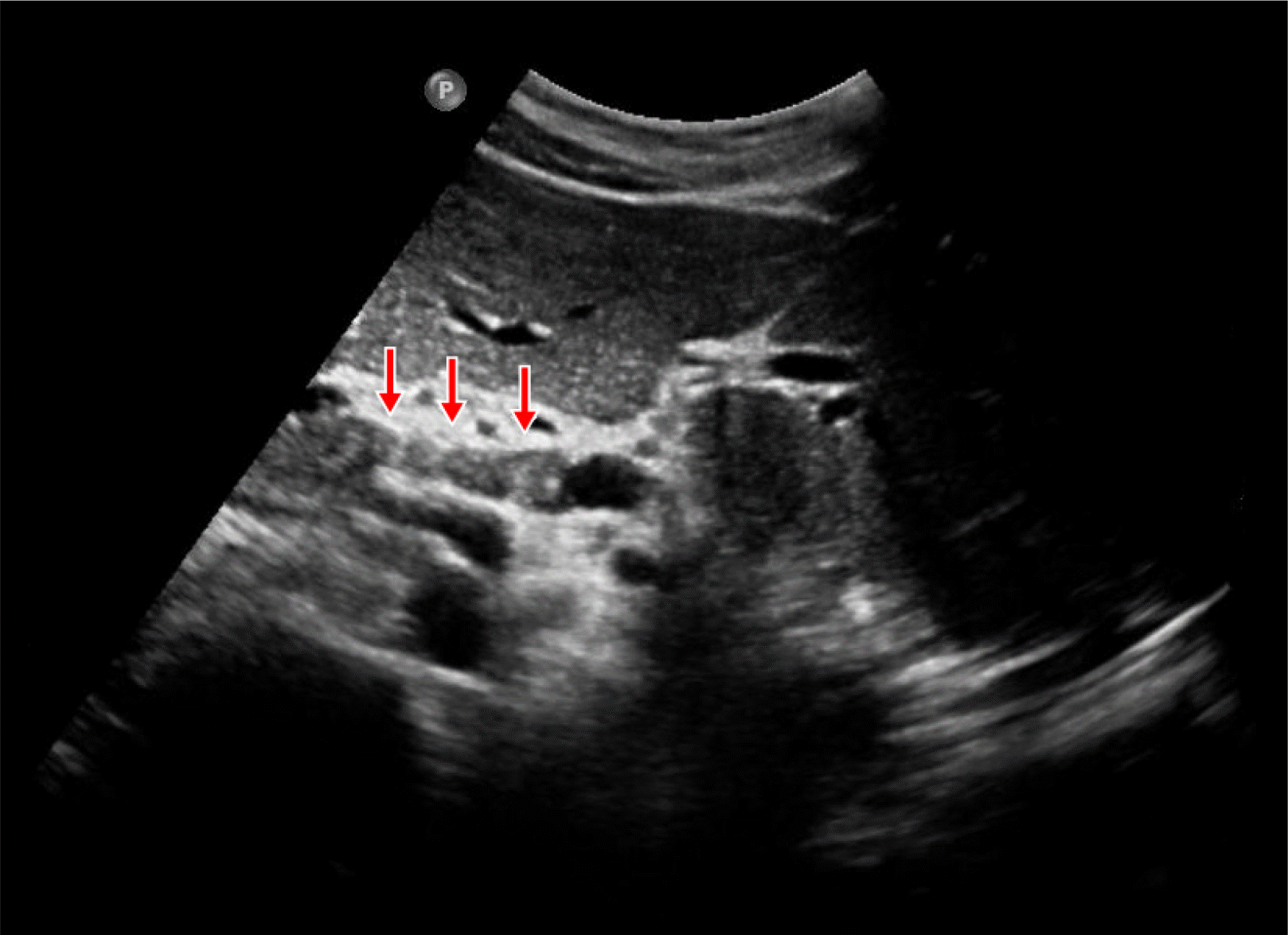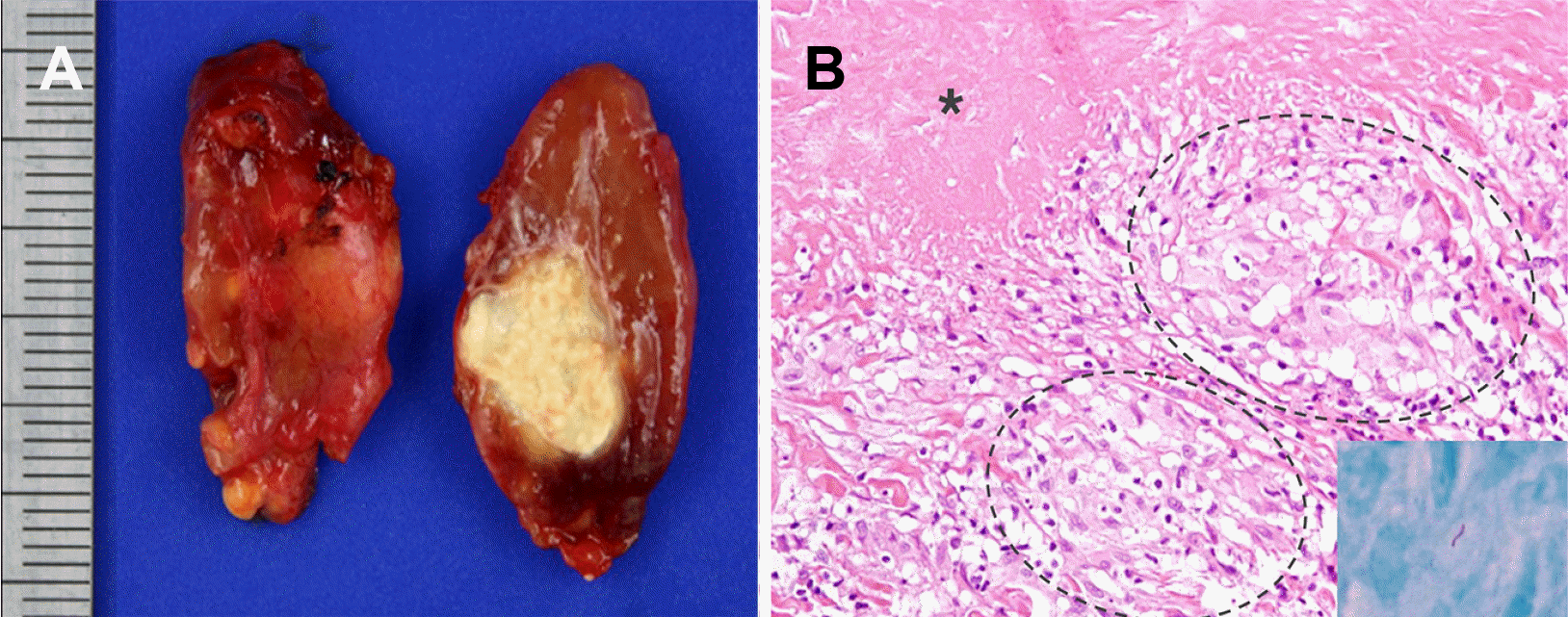The present case demonstrated a tubercular cystic duct node that was diagnosed erroneously as a cystic duct stone or thickening on preoperative CT and US; the final diagnosis was only evident after a histopathological evaluation of the GB. As mentioned previously, a literature review revealed only four cases of tuberculous cystic duct lymph nodes.
1-4 Table 1 summarizes the findings of these cases and the present case; there were two male and three female patients. Tuberculous lymphadenitis is more common in females than in males.
5,6 On the other hand, pulmonary tuberculosis is more common in males; this can be explained by the immunological and hormonal differences between males and females.
5 Three patients had concomitant GB stones, but the 4th and the present case only had minimal sludge in the GB. In particular, almost all cases of primary GB tuberculosis were reported to have coexisting gall stones.
7 All patients had right upper quadrant pain, suggesting cholecystitis, except for the first case; histopathology of the GB in the other cases showed chronic cholecystitis. The patient had a history of pulmonary tuberculosis. Therefore, the route of infection was assumed to be by swallowing infected sputum, with consequent infection of the duodenum and lymphatic spread to the cystic duct node. On the other hand, the hematogenous route cannot be excluded. The four other patients had no history of tuberculosis or concomitant tuberculosis at other sites. Pericholedochal tuberculous lymphadenitis is relatively common compared to tubercular cystic duct nodes. Sixteen cases have been reported in Korea, and these cases had the characteristics of obstructive jaundice.
8 The present case had a few calcified nodes at the periphery of the pancreatic uncinate process that were regarded as healed tuberculous nodes. In another case with a tuberculous cystic duct node, the periportal node was detected on postoperative CT.
1 A tuberculous cystic duct node may be considered a type of pericholedochal tuberculous lymph node. Pericholedochal tuberculous lymph nodes have important clinical implications. They are associated with fatal complications, such as jaundice, portal hypertension,
9 and biliary fistulas;
10 a malignancy may also be suspected in some cases.
8,11 Adenopathy showing peripheral rim-enhancement with relatively low attenuation centers and calcified lymph nodes may suggest a diagnosis of tuberculosis. However, these findings are also seen in metastatic lymph nodes.
12 Unlike benign nodes, metastatic nodes have characteristic US and CT findings indicating a clustered distribution, large size, round shape, heterogeneous texture, irregular margins, extracapsular spread, ill-defined borders, necrosis, and ring enhancement. On the other hand, these features are not highly reliable.
13
Table 1
Summary of the Reported Cases of Tuberculous Cystic Duct Lymph Nodes
|
Sex |
Age |
Gall stones |
Tuberculosis of other sites |
Country |
Reference |
|
Female |
40 |
Present |
No |
Brazil |
1 |
|
Female |
65 |
Present |
No |
India |
2 |
|
Female |
30 |
Present |
No |
India |
3 |
|
Male |
45 |
Absent |
No |
Pakistan |
4 |
|
Male |
35 |
Absent |
History of pulmonary tuberculosis |
Korea |
Present case |

In conclusion, tuberculous cystic duct nodes are quite rare. Accurate preoperative diagnosis is difficult but is essential for proper management. Excisional biopsy is recommended for the cystic duct or pericholedochal nodes detected during surgery, particularly in patients with a history of tuberculosis.







 PDF
PDF Citation
Citation Print
Print



 XML Download
XML Download